From the Russian taiga to the Indonesian island of Sumatra, we profile the places and countries where you can see tigers in the wild
A century ago, as many as 100,000 wild tigers stalked the planet but by the dawn of the 21st century, that figure had plummeted by around 95% largely due to habitat loss and poaching. Current numbers are hard to confirm – tigers are masters of camouflage after all – but estimates by the Global Tiger Forum put the global population at approximately 5,574 in 2023.
Historically, tigers roamed widely across Asia but wild tiger populations are now restricted to just 13 countries, possibly even fewer. Bangladesh, Bhutan, China, India, Indonesia, Malaysia, Myanmar, Nepal, Russia and Thailand all have confirmed tiger populations. Cambodia, Laos and Vietnam only have anecdotal evidence; wild tigers may already be extinct in these countries.
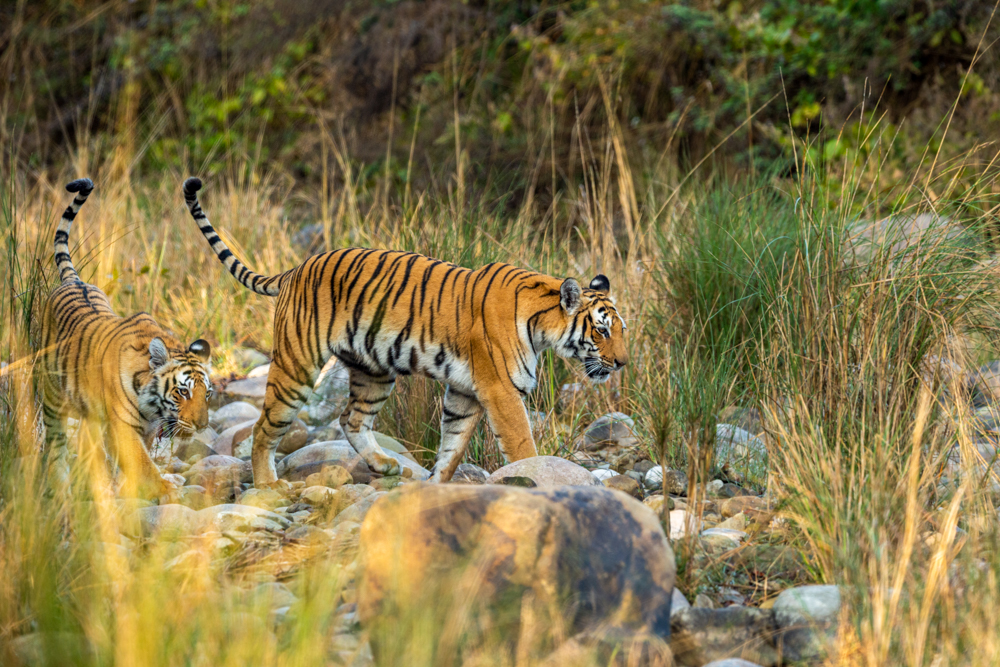
Back in 2010, wild tiger numbers were at an all-time low of around 3,200 individuals. At the time, the WWF made a global goal to double wild tiger numbers by 2022 – the next Chinese Year of the Tiger – as part of a strategy known as TX2. While the organisation ultimately fell short, huge strides were taken in what is considered the most ambitious global recovery effort ever undertaken for a single species. The project marked a significant turning point for tiger conservation.
While tiger numbers are rising, there is still a long way to go for a species classified as endangered by the International Union for Conservation of Nature (IUCN). Responsible tourism can play a crucial role in conservation by raising funds for preservation efforts. Tourism can also help protect tiger habitats by encouraging sustainable land-use practices such as community projects and wildlife-friendly agriculture.
With that in mind, we profile below the countries where you can see tigers in the wild.
Countries where you can see tigers in the wild
Since 2017, the IUCN has recognised two tiger subspecies: the continental tiger (Panthera tigris tigris) which includes the Bengal, Malayan, Indochinese and Amur (Siberian) subspecies, all found on the Asian mainland, and the Sunda tiger (Panthera tigris sumatrae), more commonly known as the Sumatran tiger, found only in Sumatra, Indonesia.
1. India
Tiger population: 3,682
Latest survey: 2022
India has 75% of the world’s wild tiger population with 3,682 recorded in the latest survey, making it the world’s best country to see tigers in the wild. India has 53 designated tiger reserves including six in Madhya Pradesh.

Known as India’s ‘Tiger State’, Madhya Pradesh is thought to be home to 785 tigers, with 563 found in its reserves. These include Kanha National Park, widely considered to be the setting of Rudyard Kipling’s classic The Jungle Book.
Elsewhere in India, Ranthambore National Park in Rajasthan, Tadoba National Park in Maharashtra and the famed Jim Corbett National Park in the Kumaon Hills of Uttarakhand offer a good chance of sightings. Jim Corbett is India’s oldest and most legendary national park and home to around 260 tigers.
Jim Corbett is one of the few tiger reserves in India that permits overnight stays within the park. On our recent visit, we stayed at Saraca Corbett, a five-star resort located in the heart of the national park.



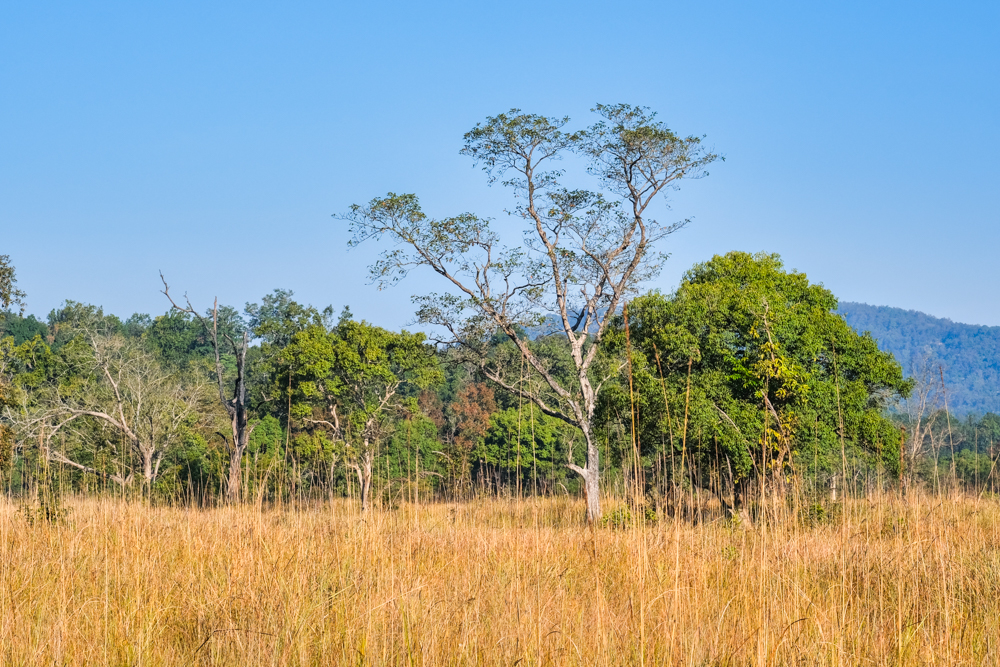

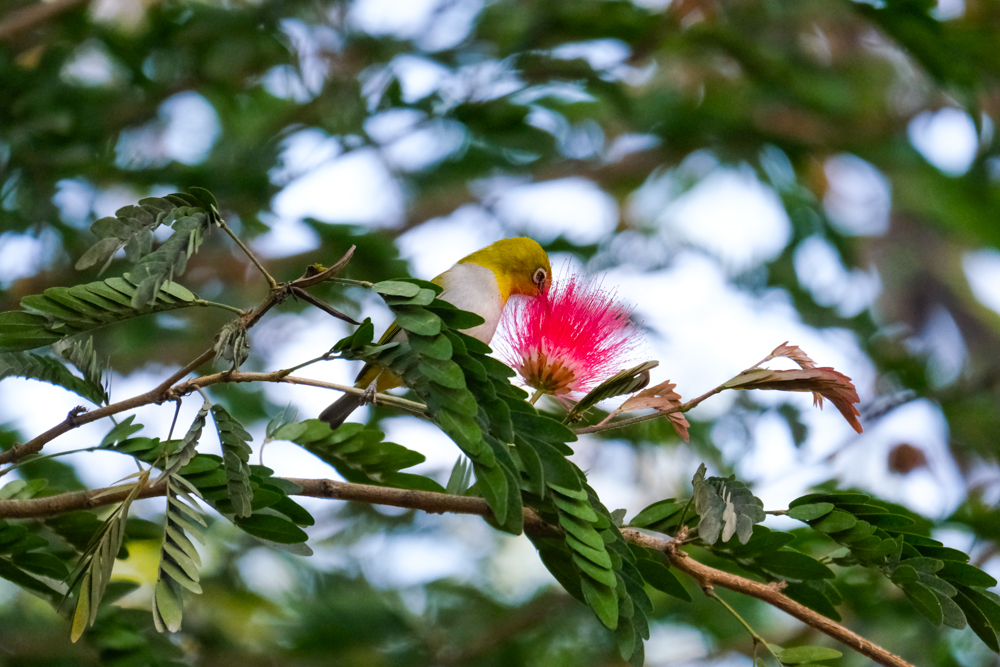
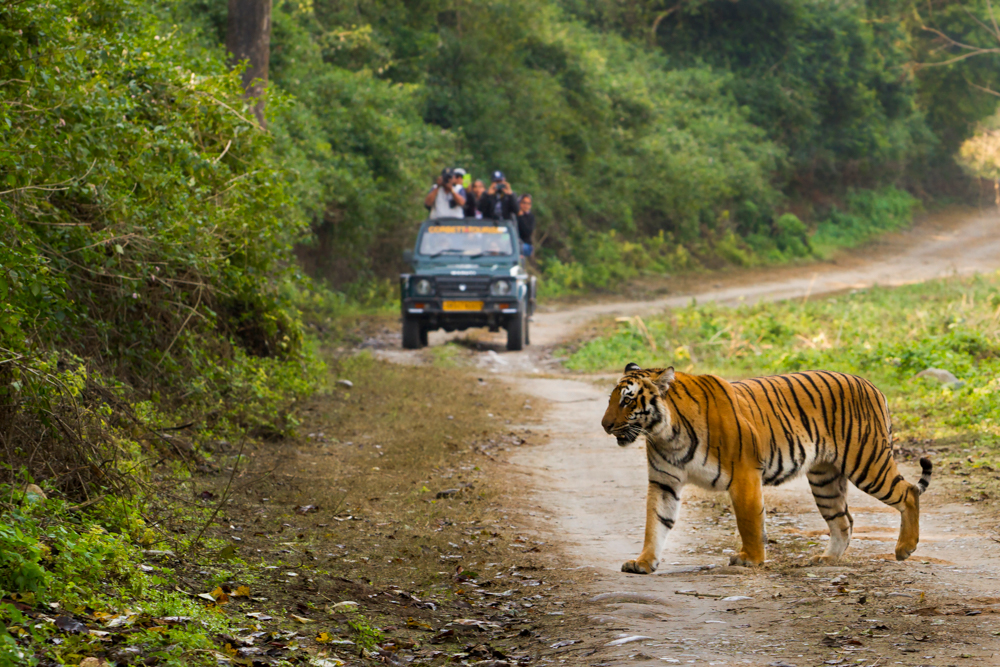
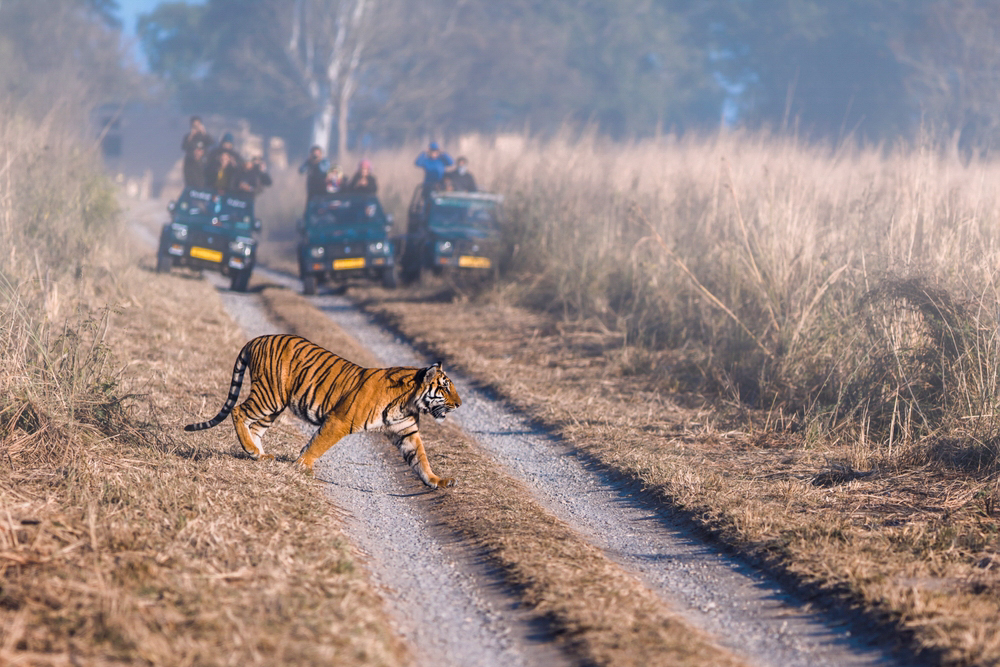
Atlas & Boots, Shutterstock
Saraca Corbett in Jim Corbett National Park
The hotel is a 10-minute drive from Dhikala gate and 30 minutes from both Bijrani and Garjiya gates. Set amidst lush grounds, Saraca has a superb restaurant (which makes use of the on-site organic garden), a seasonal outdoor swimming pool and a cycling/walking trail that circles the property.
2. Russia
Tiger population: 750
Latest survey: 2023
Last year, Russia announced its population of Amur (Siberian) tigers had increased by 40% to an estimated 750. This was a significant increase from the 540 reported at the last census in 2015.
While these figures are modest, it’s worth remembering how dire the outlook was for Amur tigers. In the 1940s, the population of wild Amurs fell to just 40 but has rebounded from the brink of extinction thanks to conservation efforts and a ban on tiger hunting.

Poaching is the greatest threat to wild Amur tigers, as their parts are still in high demand throughout Asia. The Amur is the world’s largest tiger subspecies but remains notoriously elusive. The best chance of spotting one is in the Durminskoye Reserve in the East Siberian taiga during winter when the ground and forests are blanketed in thick snow.
3. Indonesia
Tiger population: <400
Latest survey: 2010
The last surviving population of Sunda (Sumatran) tigers is in Indonesia, specifically the island of Sumatra. They once roamed throughout the Sunda Islands in Western Indonesia, including Java and Bali. However, due to habitat destruction, human-tiger conflict and poaching, the species is on the brink of extinction and has been classified as critically endangered by the IUCN since 2008.

That was when its population was estimated to have dipped below 680. Now, with this number believed to be under 400 (the IUCN puts it at 393), the future looks bleak for the smallest species of tiger. Surveying tigers in the dense jungles of Sumatra is notoriously challenging but in Kerinci Seblat National Park, park-wide surveys in 2020 reported a modest increase in numbers.
4. Nepal
Tiger population: 355
Latest survey: 2022
Nepal has almost tripled its Bengal tiger population in 12 years. In 2010, it had just 121 tigers. By 2022, that figure had risen to 355, meaning it had hit its TX2 target. At the same time, cases of attacks on humans and livestock have also risen so the Nepalese conservation authorities have decided to now focus on improving human-tiger coexistence and habitat connectivity.

Tigers can be found in five national parks in Nepal. The UNESCO-listed Chitwan National Park is probably the country’s most well-known national park. As well as 128 Bengal tigers, the park has been recognised for its protection of the one-horned rhinoceros and gharial crocodile.
However, Bardia National Park in the remote northwest of Nepal, where as many as 125 tigers roam, is considered the best place in the country to spot tigers.
5. Thailand
Tiger population: 148-189
Latest survey: 2022
Thailand has the highest number of wild tigers in Southeast Asia with as many as 189 prowling the country’s forests, representing a 100% increase since 2014. While tiger numbers are currently stable in Thailand, the Indochinese tiger sub-species is critically endangered and the Thai population is vulnerable to poaching and lack of prey.
Sightings are extraordinarily rare but there have been promising signs. In 2016, camera traps discovered a new breeding population of tigers living in a national park in eastern Thailand. Then, in 2023, a rare video of a tigress and her three cubs was captured in the Upper Western Forest Complex.
6. Bhutan
Tiger population: 131
Latest survey: 2021-22
Like Nepal, Bhutan has made huge progress with its tiger numbers thanks to its commitment to conservation. The number of tigers within its borders has increased by 27% – up from 103 in its first systematic national tiger survey in 2015 to 131 in the most recent survey conducted in 2021 and 2022.
The best place in Bhutan to spot tigers in the wild is the Royal Manas National Park (RMNP), in the eastern Himalayas. The park has the world’s highest tiger density with one tiger per 25 square kilometres.
Official figures are hard to pin down as the park is part of a cross-border tiger conservation program with India known as the Transboundary Manas Conservation Area. However, a 2018 survey suggested RMNP’s tiger population had grown from 10 cats in 2010 to 22. It’s hoped there are now even more.
7. Bangladesh
Tiger population: 114
Latest survey: 2018
In 2004, Bangladesh had as many as 440 tigers, all residing in the Sundarbans, the world’s largest mangrove forest and an important habitat for the big cats. However, by 2015, the population had plunged to approximately 106. Fortunately, there are promising signs of recovery as a 2018 census suggested the figure had improved to 114.

There is an ongoing camera trapping survey which has so far found more presence of tigers across the forest than in previous counts. The final tally of the tiger population in Bangladesh will be announced on 29 July 2024 – International Tiger Day.
The Sundarbans is home to an abundance of other wildlife including saltwater crocodiles, wild boar, langurs and myriad species of birds.
8. Malaysia
Tiger population: <100
Latest survey: 2018
The Malayan tiger, native to the southern half of the Malay Peninsula, is a subspecies of the continental tiger. Like the Sumatran tiger, the future of the Malayan tiger looks bleak. Numbers have been dropping for decades and the latest census put the total population below 100 – down from a 2008 estimate of 500.

Poaching along with limited access to prey have combined to push the Malayan tiger to the brink of extinction. The “best” chance of seeing tigers in Malaysia is in the Belum-Temengor Forest Reserve where there are reportedly 23 tigers residing.
9. China
Tiger population: 55
Latest survey: 2018
In 2010, there were no more than 20 wild Amur tigers in China, most of which were believed to have crossed the border from Russia. Then, in 2014, camera traps captured footage of a tigress and her cubs in Jilin Wangqing Nature Reserve demonstrating that once again tigers were breeding in China.
Camera trap footage taken between 2013 and 2018 revealed that there are at least 55 Amur tigers now living in northeastern China. Thanks to recently introduced government policies and conservation efforts, the population is slowly recovering and moving inland from the country’s northmost province.
10. Myanmar
Tiger population: >22
Latest survey: 2018
In 2019, the Myanmar government estimated the number of remaining Indochinese tigers in the country at just 22 individuals. However, this was based on surveys of only 8% of potential tiger habitat across the country between 2016 and 2018.
The country still has extensive forest cover and has the potential to cultivate a much larger tiger population. However, evidence of poaching was also captured during the survey and Myanmar has recently recorded a marked rise in elephant poaching.
11. Cambodia
Tiger population: unknown
Latest survey: n/a
Indochinese tigers are functionally extinct in Cambodia, meaning that if there are any wild tigers still inhabiting the country, there are so few individuals alive that the population will never recover. The last tiger in Cambodia was caught by a camera trap in 2007.

The good news is that India is planning to translocate some of its tigers to Cambodia in an attempt to reintroduce the species to the country. Cambodia has identified forest land in its Tatai Wildlife Sanctuary in the Cardamom Rainforest to accommodate the tigers from India.
12. Laos
Tiger population: unknown
Latest survey: n/a
There is only anecdotal evidence suggesting there are wild Indochinese tigers left in Laos. In 2010, the government believed there were 17 although this was not verified. The IUCN considers wild tigers in Laos functionally extinct.

The WWF has identified Laos as potentially recovering its tiger population as it still has “ample tiger habitat”. Unfortunately, new footage was released in 2022 revealing that illegal tiger farms in Laos have been expanding instead of shutting down.
13. Vietnam
Tiger population: unknown
Latest survey: n/a
In Vietnam, Indochinese tigers are also believed to be functionally extinct in the wild. The last confirmed sighting was in 1999 when a tiger was photographed by a camera trap in Pu Mat National Park.

Following unconfirmed reports of a tiger sighting in 2022, camera traps were set up in Phong Nha-Ke Bang National Park but have not captured any evidence yet.
Enjoyed this post? pin it for later…

